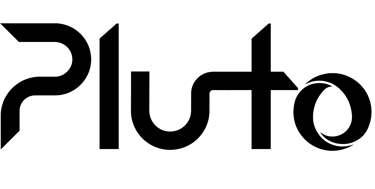Major Restrictions on Public Service Loan Forgiveness (PSLF): What You Need to Know About the Changes
New restrictions on the Public Service Loan Forgiveness (PSLF) program have raised concerns for thousands of public servants relying on student loan relief. Learn about the changes, how they impact borrowers, and what alternative options are available for those seeking student loan forgiveness.
3/9/20255 min read


In a move that has shaken the student loan community, the U.S. government has enacted significant changes to the Public Service Loan Forgiveness (PSLF) program. Aimed at providing financial relief to individuals working in public service roles, the PSLF program has long been considered a critical lifeline for public servants—ranging from teachers to healthcare workers. However, new restrictions on PSLF eligibility could have a lasting impact on those hoping to have their student loan debt forgiven after 10 years of qualifying service.
As the landscape of student loan forgiveness continues to evolve, it’s essential for borrowers to understand the recent changes, how they affect the future of PSLF, and what options remain for those seeking student loan relief through federal programs.
What Is Public Service Loan Forgiveness (PSLF)?
The Public Service Loan Forgiveness program was introduced in 2007 as part of the College Cost Reduction and Access Act. It was designed to encourage individuals to pursue careers in public service, such as teaching, law enforcement, and healthcare, by offering student loan forgiveness after 10 years of qualifying service and monthly payments under a qualifying repayment plan. PSLF is an attractive option for individuals burdened by student loan debt, particularly those who chose lower-paying but vital public service jobs.
Under the previous guidelines, individuals working in eligible public sector positions could have their remaining federal student loan debt forgiven after making 120 qualifying payments over 10 years. However, recent changes to the program have raised alarms, leaving borrowers wondering whether they can still rely on PSLF as a viable option for student loan relief.
New Restrictions on PSLF Eligibility: What’s Changed?
On March 1, 2025, President Donald Trump signed an executive order imposing new restrictions on the Public Service Loan Forgiveness program. While the order was positioned as a measure to ensure that the program supports those who truly contribute to public service, it has resulted in the exclusion of many borrowers who previously qualified for forgiveness.
1. Narrowed Definition of Public Service Jobs:
One of the most significant changes is the narrowing of the definition of what constitutes a "public service" job. Under the new guidelines, borrowers working in public sector roles that are tied to issues such as illegal immigration, child abuse, or even certain aspects of public protests may no longer qualify for PSLF. This move has sparked considerable debate, with critics arguing that it undermines the original intent of PSLF, which was to provide financial relief to individuals working for the public good.
2. Impact on Federal and Nonprofit Employees:
In particular, nonprofit employees—who were once able to take advantage of PSLF—are now facing new challenges. Previously, employees of 501(c)(3) organizations were eligible for PSLF, but with the new restrictions, some organizations may no longer be deemed eligible. This shift could leave many nonprofit workers in a financial bind, unsure whether their years of service will count toward student loan forgiveness.
3. Limited Loan Forgiveness for Certain Industries:
The changes have also imposed limits on loan forgiveness for those working in specific industries or sectors, such as healthcare or law enforcement. If your role is deemed to be connected to issues like public unrest or illegal activities, you may no longer qualify for forgiveness, even if your position is otherwise considered a public service job. This restriction is expected to affect numerous individuals in critical roles, especially those working in underserved or marginalized communities.
The Fallout: How Will These Changes Affect Borrowers?
The implications of these new restrictions are profound, especially for the thousands of borrowers who were depending on PSLF for relief from their student loan debt. Below, we outline the key ways in which these changes could impact public service workers.
1. Increased Financial Burden for Public Servants:
One of the most immediate effects of these changes is the increased financial burden on public servants who were counting on PSLF to erase their student loan debt. Without access to loan forgiveness after 10 years of service, many workers may find themselves stuck with their student loans for decades, potentially leading to more financial strain and limiting their ability to save for the future.
2. Loss of Trust in Federal Loan Forgiveness Programs:
Many public service employees who had been working toward PSLF for years may feel disillusioned by the new restrictions. The sudden shift in eligibility criteria could erode trust in federal student loan forgiveness programs, as borrowers may no longer feel confident in the promises made by the government regarding loan relief. As a result, some workers may consider leaving their public service jobs in favor of higher-paying private sector positions, further exacerbating workforce shortages in essential fields like healthcare, education, and public safety.
3. Legal Challenges and Advocacy:
In response to these changes, several advocacy groups are already planning legal challenges. These organizations argue that the restrictions violate the original intent of the PSLF program and may disproportionately affect vulnerable populations. Legal experts suggest that a protracted battle over the future of PSLF could delay or prevent the implementation of these new restrictions, though this remains uncertain. For borrowers affected by the changes, seeking advice from a student loan attorney may be a necessary step to understand their options.
What Are Your Options If You’ve Been Affected by PSLF Restrictions?
If you are a borrower who is affected by these recent changes to PSLF, there are still several options available to manage your student loans and potentially qualify for other forms of forgiveness.
1. Look Into Other Loan Forgiveness Programs:
While PSLF may no longer be an option for some public servants, there are other loan forgiveness programs available. For example, the Teacher Loan Forgiveness program offers loan forgiveness to teachers who work in low-income schools. Similarly, the Income-Driven Repayment (IDR) forgiveness program allows borrowers to have their remaining loan balance forgiven after 20 or 25 years of qualifying payments, depending on the repayment plan they are enrolled in.
2. Reevaluate Your Repayment Plan:
If PSLF is no longer viable, switching to an income-driven repayment plan may be a good alternative. These plans base your monthly payment on your income and family size, potentially lowering your payment and providing greater financial flexibility. Additionally, income-driven repayment plans may offer forgiveness after 20 or 25 years of qualifying payments, although the tax implications of forgiveness should be considered.
3. Consider Refinancing Your Loans:
For borrowers with strong credit, refinancing student loans may be an option to secure a lower interest rate and reduce monthly payments. While refinancing can be an effective way to manage your loans, it’s important to note that refinancing federal loans through private lenders means losing access to federal protections, such as forbearance and deferment options.
How to Stay Informed: Keep Up With Federal Student Loan Changes
As the student loan landscape continues to shift, it’s important to stay informed about changes that may impact your repayment strategy and eligibility for forgiveness programs. Borrowers affected by the recent PSLF restrictions should regularly check the U.S. Department of Education’s website for updates on eligibility requirements, as well as review their loan servicer’s communications for any changes that may affect their repayment plans.
Conclusion: The Future of Public Service Loan Forgiveness
The new restrictions on Public Service Loan Forgiveness represent a major shift in the federal student loan landscape, impacting the future of student loan forgiveness for many public servants. While the changes have sparked significant debate, the reality remains that borrowers must navigate an increasingly complex system of loan repayment options. Whether you’re currently working toward PSLF or exploring other forgiveness opportunities, it’s critical to understand how these changes may affect your future—and take proactive steps to safeguard your financial well-being.
If you're unsure about the impact of these changes or need guidance on navigating your student loan repayment options, consider reaching out to a financial advisor or student loan expert. By staying informed and exploring all available options, you can make the best decision for your long-term financial health.

